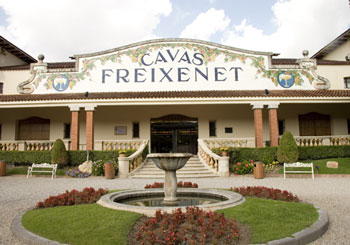 Before the 1970’s cava was known as Spanish Champagne, that was before the E.U ruled that only wine produced in that specific area of Champagne in France could go by the name.
Before the 1970’s cava was known as Spanish Champagne, that was before the E.U ruled that only wine produced in that specific area of Champagne in France could go by the name.
It all started in the 1870’s, with a healthy intention of producing a sparkling wine to rival the French champagne but grown on Spanish soil and with local grapes. Cava is a bubbling success story that needs toasting and the place to go for a glass of bubbly is the village of Sant Sadurni D’Anoia in Penedes, Catalonia which is said to produce 85% of the total cava output.
The E.U ruling helped the Spanish growers, making them label their wines under their own name- at the same time the restrictions as to what could be labelled as cava meant that an increase in the quality of the wine produced. Today cava brings us not an inferior alternative – but an equal wine in quality and taste and a superior one in price.
A mild climate an average of 12 -14 degrees, limited rainfall and hardly any wind make it ideal growing conditions for the Macabeu, Xarel-lo and Parellada grape.
With growing success the big bodegas – wine cellars like Freixenet and Cordorniu have ploughed money back into Cava production to ensure a continuijng presence of this clear effervescent bubbly.
Since 1986 the Chardonnay grape has been used in the DO (domain d’origen), the Spanish quality mark and we all know that Chardonnay is the tops – still or frothy.
Guided tours and wine tasting sessions can be sampled at the bodegas of both these large cava producers.